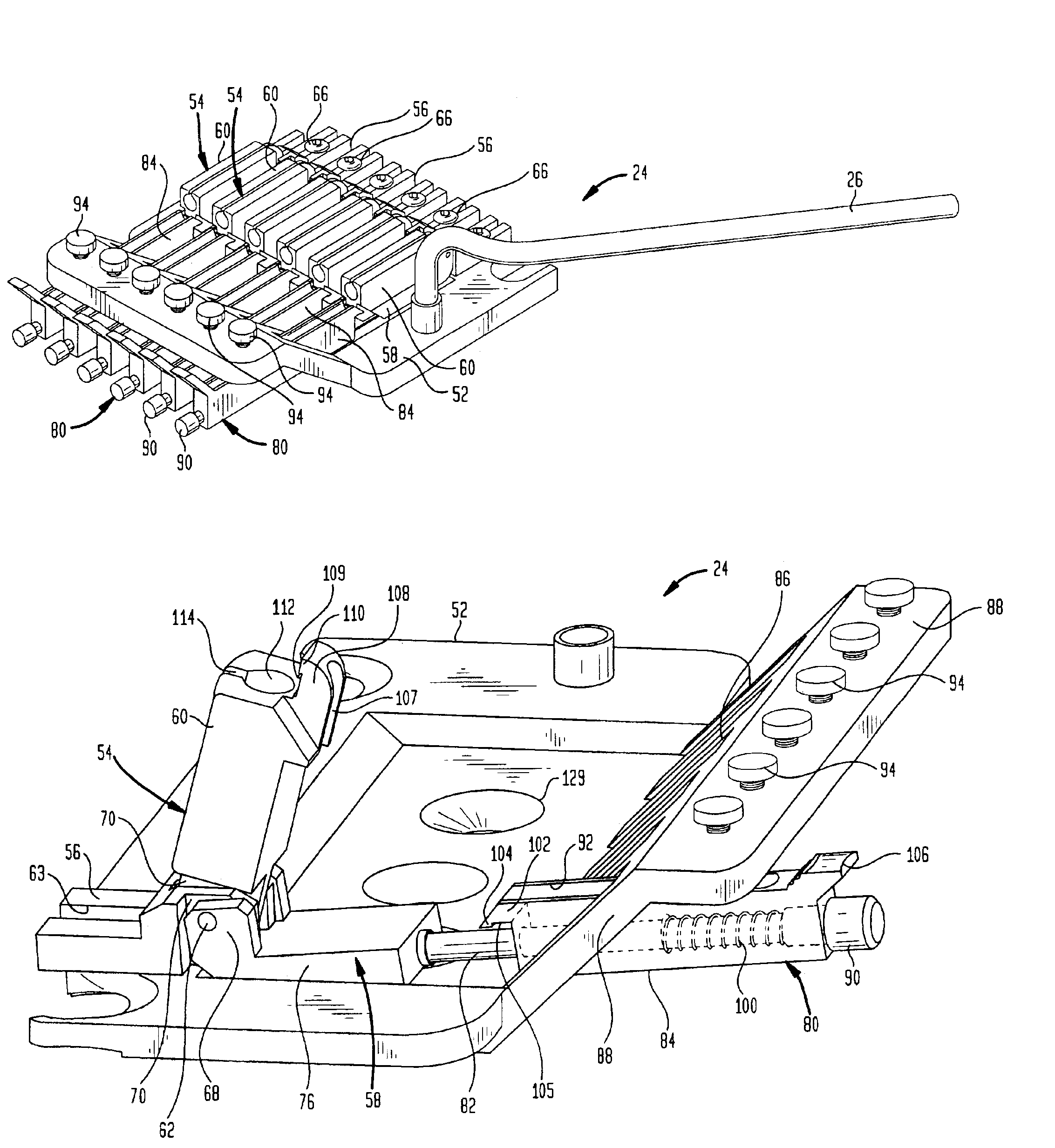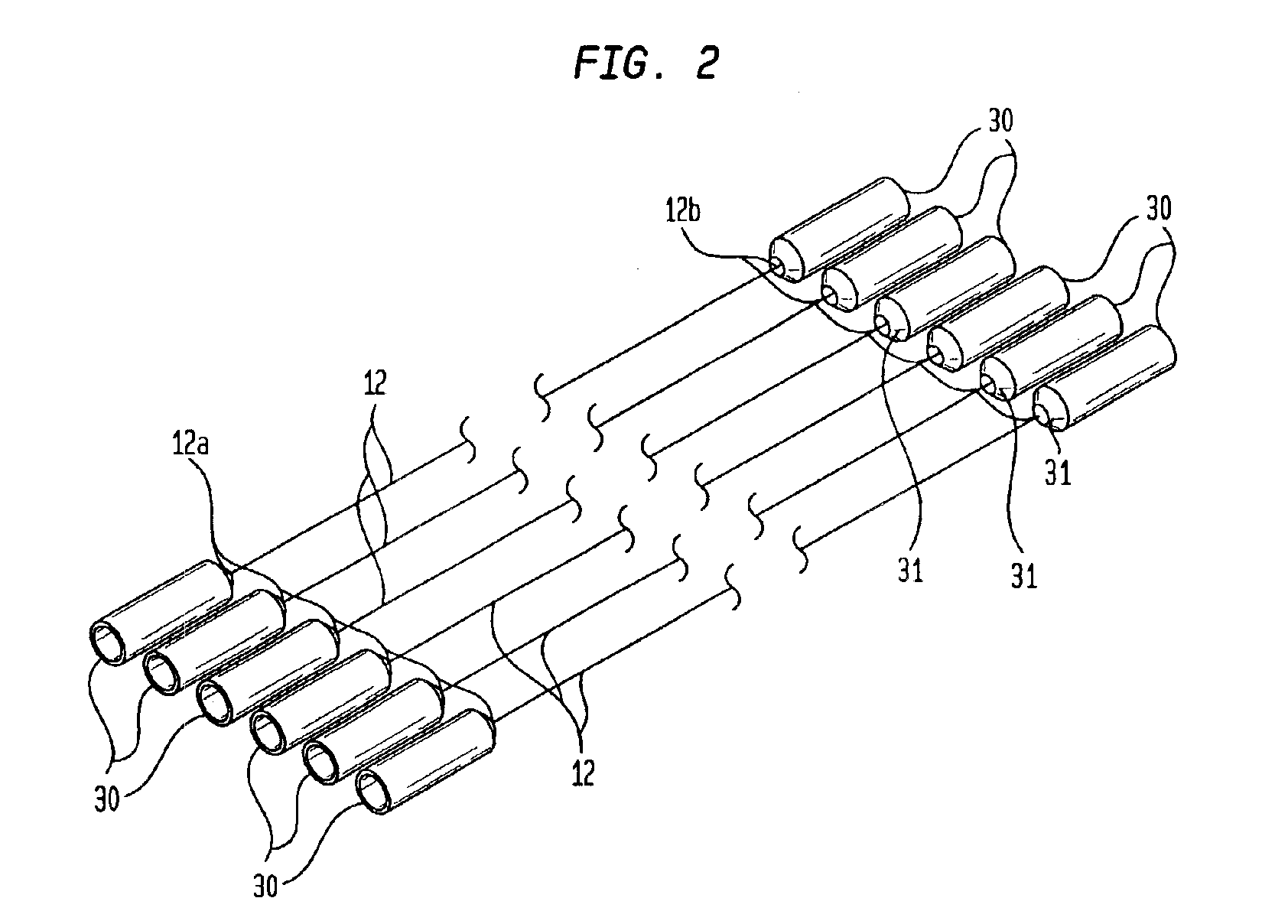Tuning systems for stringed musical instruments
- Summary
- Abstract
- Description
- Claims
- Application Information
AI Technical Summary
Benefits of technology
Problems solved by technology
Method used
Image
Examples
Embodiment Construction
[0081]Like reference numerals have been used whenever possible to designate like components in the various embodiments of the present invention. Thus, in certain embodiments, various components or features may be designated by different reference numerals, while similar components and features will be designated by the same reference numerals.
[0082]Referring first to FIGS. 1-19 of the drawings, FIG. 1 shows an electric guitar type of stringed musical instrument 10 utilizing a string tuning apparatus in accordance with one aspect of the present invention. While this aspect of the present invention has been employed with respect to an electric guitar 10, it should, however, be appreciated that the present invention can be used in connection with various other types of stringed musical instruments, including, but not limited to, acoustic guitars, violins, banjos, and the like, wherein the associated strings 12 need to be retained in place on the instrument 10 and replaced at various ti...
PUM
 Login to View More
Login to View More Abstract
Description
Claims
Application Information
 Login to View More
Login to View More - R&D
- Intellectual Property
- Life Sciences
- Materials
- Tech Scout
- Unparalleled Data Quality
- Higher Quality Content
- 60% Fewer Hallucinations
Browse by: Latest US Patents, China's latest patents, Technical Efficacy Thesaurus, Application Domain, Technology Topic, Popular Technical Reports.
© 2025 PatSnap. All rights reserved.Legal|Privacy policy|Modern Slavery Act Transparency Statement|Sitemap|About US| Contact US: help@patsnap.com



